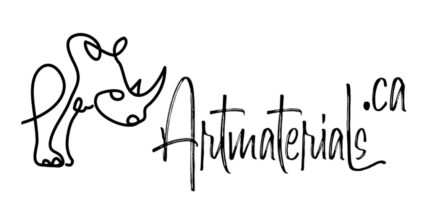- You have no items in your shopping cart
- Continue Shopping

If for oil or acrylic painting we have many mediums to choose from that serve in a different way, watercolour medium sounds a little bit weird: why watercolour needs a medium? There is no texture to build, there is no need to increase or decrease drying time? Why do I need medium for watercolours?
In fact, most watercolorists paint without any mediums added. However, there are some situations when medium helps us improve painting performance.
What is watercolour medium?
Generally speaking, watercolour medium has arabic gum as a main component. Traditionally, all watercolours had arabic gum as a binder. However, with time in mass production arabic gums was partially replaced with other sugar-based ingredients (such as dextrin) to reduce costs.
Arabic gum is a natural sap from certain kinds of Acacia trees. It’s used a lot in baking and RUSART, for example, buys food-grade arabic gum from grocery vendors to make sure high safety standards. Bakers add arabic gum to icings, chewing gums, fillings etc. as it acts as stabilizer preventing sugar from crystallizing, as well as emulsifier, providing even and smooth consistency of products.
For artist’s purposes, we use arabic gum solution with some additives. For our RUSART Naturals watercolour medium we use a small amount of honey and glycerin as plasticizers and essential oils as preservatives.
We performed a few tests with RUSART Naturals watercolour medium and, now, sharing the results with you.
Watercolour medium separates painting zones

As you can see, watercolour medium prevents paint from bleeding, creating quite obvious borders between the colours.
Why? Arabic gum works like glue and holding agent, not for watercolours only. For example, for hot enamelling techniques, when artists spread glass powder on metal surfaces, they use arabic gum based holding agent, if they desire to affix enamel to certain areas.
Watercolour medium helps with washing out lines

Paint came off effortlessly from the paper WITH medium, leaving behind completely white lines. Without medium paint didn’t come off in full.
Why? Watercolour medium created a fine film between paints and paper that prevent paints from being absorbed by cotton fibre. SO, if you’re planning to correct your painting a lot, or you’re working with synthetic organic pigments (hanza yellow, naphthol red, pyrrole red, Phthalo blue or green etc.) use watercolour medium to be able to correct your lines after application. All synthetic organic pigments have stronger staining properties than mineral pigments.
Mineral pigments don’t show that dramatic difference. Also, if your paper contains less cotton, watercolour medium’s effect will be less intense.
Watercolour medium makes some colours look brighter

Why? Arabic gum is technically sap, and medium made with this gum can be considered as water-based varnish, that changes optical properties of the painting layer.
Watercolour medium helps covering oily surface

Unfortunately, when we touch paper with hands, some grease from finger tips can stay on paper and affect painting outcome in unexpected way.
Arabic gum helps make your work smoother. We made an experiment. First, we drew some lines and smudged them with soft pastel. And even soft pastels can contain oils or waxes. Then we used watercolour medium and spread pastel powder with a brush. Left side doesn’t have any medium applied, and you can see that spreading is not that smooth, as well as some oily spots show off.
The right side looks softer and has no visible oil stains.
Why? Arabic gum here works as the finest film, covering oil and everything else, taking only smallest particles into the layer.
Make your own experiments and open new opportunities with arabic gum medium! But use it wisely. As you see, it may have some “side effects”.
(c) RUSART




